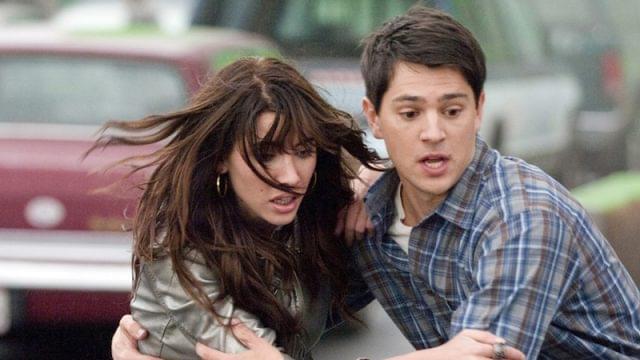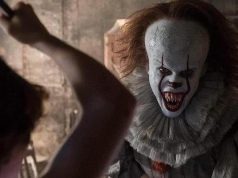
While “Saw” and its sequels were becoming the highest-grossing horror franchise in movie history (not adjusting for inflation) and inspiring much media hand-wringing about “torture porn” and whatnot, the “Final Destination” series was quietly doing its own thing, murdering just as many young people in just as flamboyant a fashion, yet getting only a fraction of the attention.
This is unfair. The “Final Destination” movies have generally been more clever and watchable (and less mean-spirited) than their Jigsaw-centric counterparts, and have done more with their limited formula than “Saw” has done with its. “Saw” is flashier, though, with its emphasis on torture and psychological cruelty. “Final Destination” deaths tend to be quick and painless for the victim, and this is less grueling (and thus less entertaining?) for the audience, not to mention less likely to grab headlines when people write about what the kids are watching these days. But if you consider the ideas at the core of the two franchises, you’ll find that “Final Destination” is far more malevolent.
The point of the “Saw” films is that the Jigsaw-selected ne’er-do-wells and sad sacks are being given the opportunity to rekindle their joie de vivre through devilish traps that allow them to choose life over death. They are the masters of their fates. It’s a stretch, and the message is not often well executed in the franchise, but it’s there. The point in “Final Destination” is exactly the opposite: You CAN’T choose your destiny. When death comes a-callin’, there’s no escaping it, no matter how good or noble or righteous you are. That’s some dark philosophy there, friends.
Such a fatalistic view deserves a sense of humor, because, hey, what are you gonna do but laugh? Morbid mirthfulness was at the heart of the first “Final Destination,” mostly lacking in the abysmal “Final Destination 2,” back again in “Final Destination 3,” gone again in “Final Destination 4” (aka “The Final Destination”), and has now returned once more for “Final Destination 5.” Which isn’t to say it’s a comedy, only that its self-awareness is evident in the way it delivers outrageously over-the-top death scenarios that are bound to provoke gasps and laughs in equal measure.
Just as funny, though perhaps not intentionally, is how precisely this fourth sequel follows the established formula. A nondescript young man named Sam (Nicholas D’Agosto) has a premonition of a suspension-bridge disaster that is played out before us, full of gory death and mayhem. (It’s in 3D, too. YOU’RE WELCOME!) Waking from his reverie, he urges his cohorts off their bus just in time to escape what turns out to be an actual disaster with the bridge, just as he dreamed it. There are seven other survivors: his girlfriend (Emma Bell), best friend (Miles Fisher) and best friend’s girlfriend (Ellen Wroe), token black guy (Arlen Escarpeta), comic-relief horndog (P.J. Byrne), slutty girl (Jacqueline MacInnes Wood), and their blustery boss (David Koechner). (They all work at a paper company called Presage. Get it? They don’t.)
They are spooked after their brush with death, more so because Sam somehow predicted it, and even more so because then they start dying anyway, one by one, in the order they should have died on the bridge. A creepy coroner played by Tony Todd (who turned up in a couple previous entries, too) dutifully informs them that you can’t cheat death, which I guess is part of his job as coroner. The rest of the film consists of them trying to cheat death anyway, and in the process meeting their separate ends through various rococo sequences of events.
Steven Quale, a second-unit guy from James Cameron’s crew getting his first big feature as director, focuses his energy on the death and near-death scenes. The opening premonition is nerve-janglingly effective, as is a later sequence set on a gymnastics floor. The subsequent deaths are hit-or-miss, but they all show some creative spark. Quale sets them up like a cross between a joke and a magic trick, carefully establishing crucial details — a frayed wire, a loose screw — misdirecting our attention a couple times, making us anticipate the payoff, and then, WHAM, he hits us with an unexpected punchline.
Unfortunately, nearly everything in between the death sequences is tedious, as if no one bothered to expend any effort on those sections. The writer, Eric Heisserer, who worked on last year’s “A Nightmare on Elm Street” remake, manages to find a couple small variations on the familiar theme, including a pleasant surprise in the last reel, but by and large the dialogue is unimaginative and mechanical. I think everyone understands that the kills are the main attraction here, but that doesn’t mean it’s okay to skip over the elements that tie them together. That kind of laziness is disappointing in what is otherwise a scrappy underdog horror franchise.
C+ (1 hr., 32 min.; )
[Reprinted from Film.com.]





